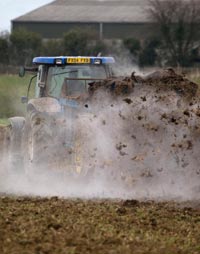Scientific approach needed to capitalise on manure applications

An application of organic manure is worth up to £270/ha in fertiliser savings alone. Capitalising on that value requires a scientific approach, according to ADAS soil scientist Lizzie Sagoo.
“Know the nutrient content of what you’re applying, put it on evenly and at sensible rates, minimise losses and adjust your mineral fertiliser input,” was her advice.
RB209 is a good starting point for nutrient content, although laboratory analysis will provide more accurate information to help nutrient planning. Nutrient management tools, such as PLANET and MANNER, are a valuable help when calculating applied fertiliser requirement.
Even application is crucial, and mistakes can cause lodging, with resulting impacts on crop quality. “The costs of manure handling and application are likely to be similar, whether done badly or well,” pointed out Dr Sagoo.
With manure being the main cause of diffuse pollution from agriculture, growers must also ensure they minimise losses from applications. Shallow injection of slurry can reduce ammonia loss by up to 70%, according to research.
Golden rules for making brass out of muck |
|---|
*Assumes spring surface application N = 54p/kg; P2O5 = 43p/kg; K2O = 59p/kg |

